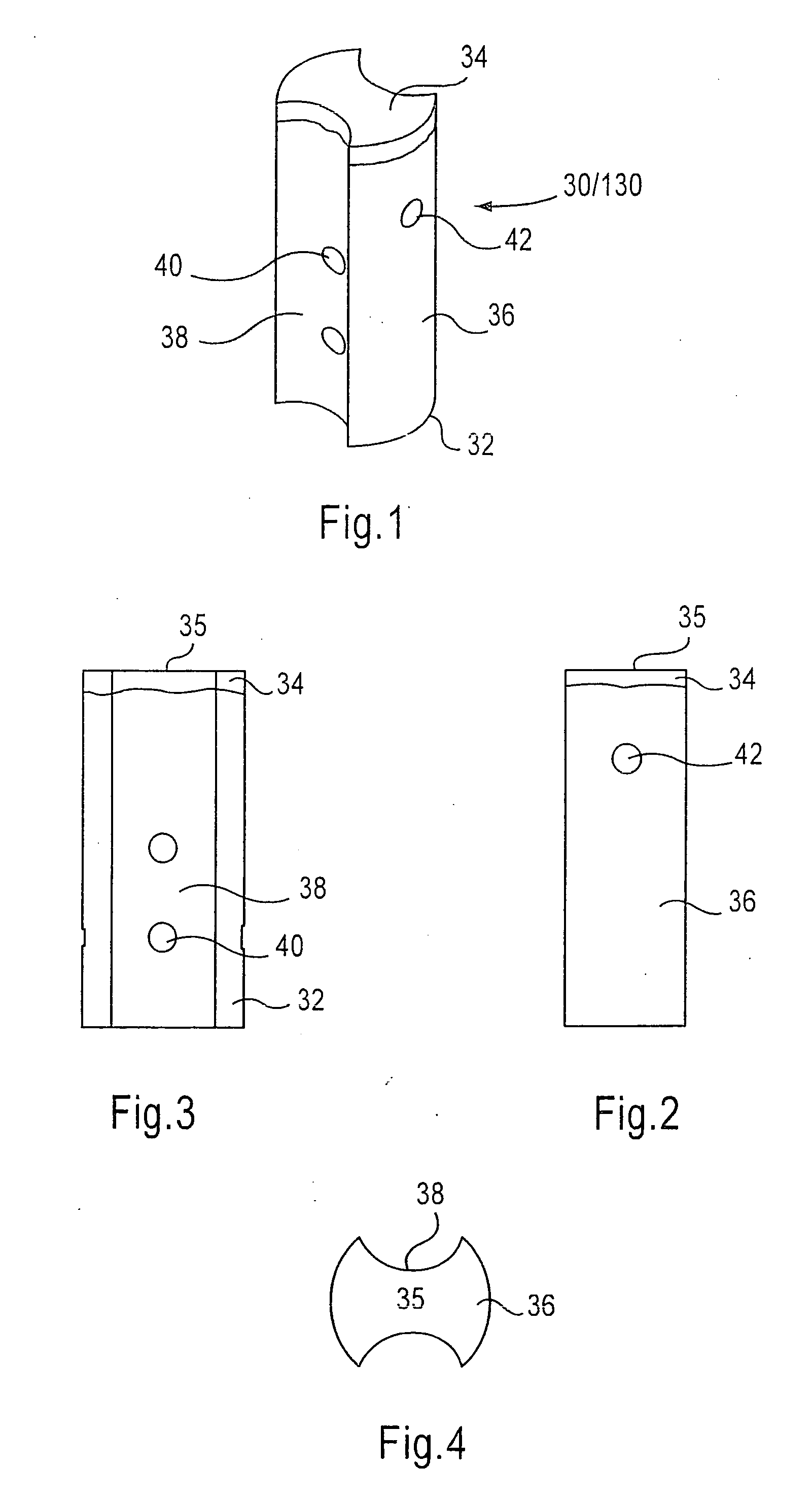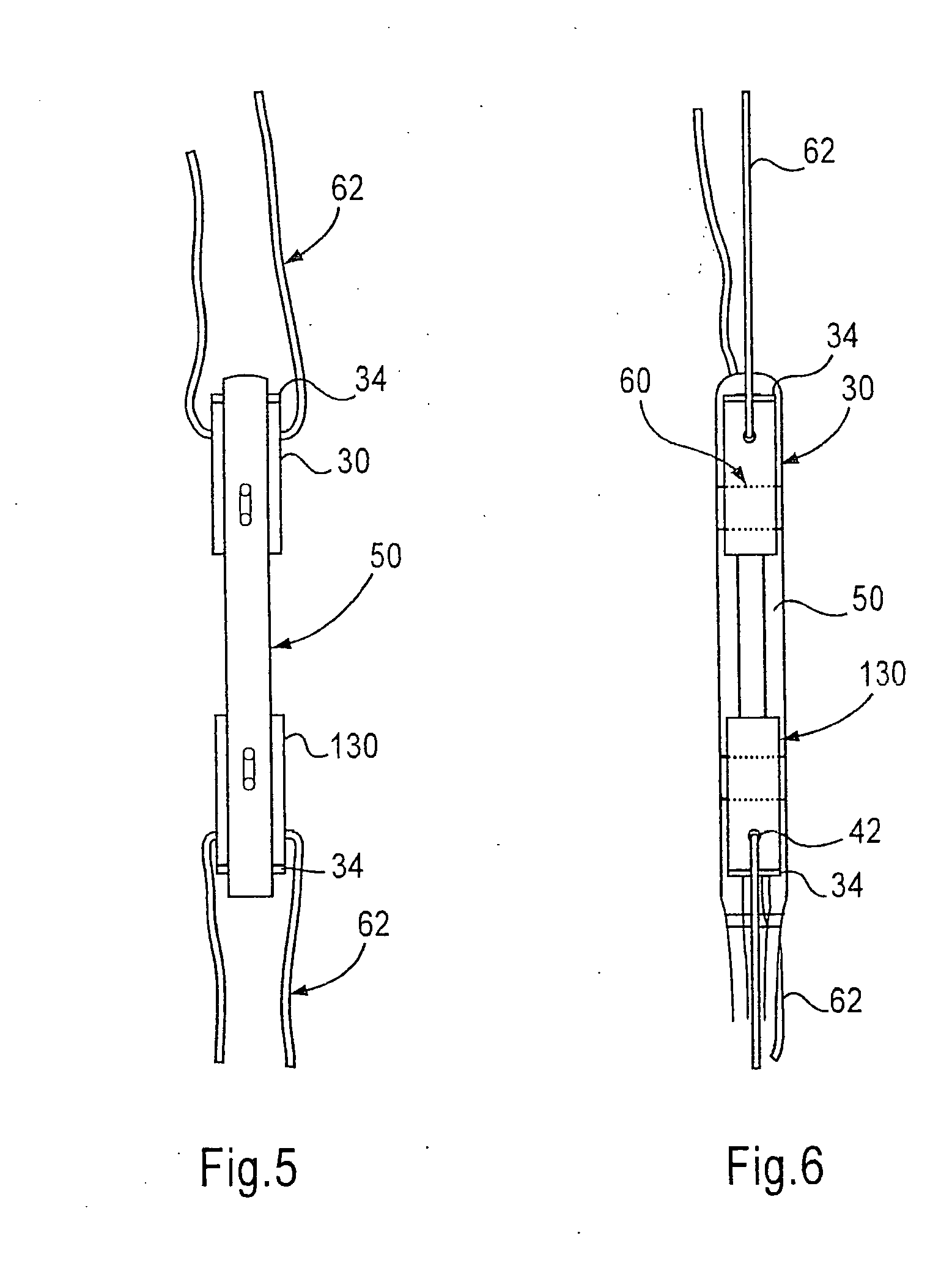Bone-tendon-bone assembly with cancellous allograft bone block having cortical end portion
- Summary
- Abstract
- Description
- Claims
- Application Information
AI Technical Summary
Benefits of technology
Problems solved by technology
Method used
Image
Examples
Embodiment Construction
[0034]The preferred embodiment and best mode of the present invention is shown in FIGS. 1-8.
[0035]As shown in the drawings, a reconstructed bone-tendon-bone (B-T-B) assembly for a knee joint is shown as is well known in the art and which is incorporated by reference in U.S. Pat. Nos. 6,730,124 issued May 4, 2004 and 7,141,066 issued Nov. 28, 2006. The cruciate ligament reconstruction surgical operation can be conducted as an open orthopedic surgery or through arthroscopic surgery. While the description of the invention is primarily directed to knee reconstruction, the present invention can easily be adapted to other joints requiring ligament or tendon replacement.
[0036]A number of surgical methods and variation of the same can be used in the tendon reconstructive surgery. Representative methods which are exemplary but not exclusive or limited are referred to as the Lipscom et al. Technique, the Puddu Technique, the Zaricznyj Technique, the Zarins and Rower Techniques and are set for...
PUM
 Login to View More
Login to View More Abstract
Description
Claims
Application Information
 Login to View More
Login to View More - R&D
- Intellectual Property
- Life Sciences
- Materials
- Tech Scout
- Unparalleled Data Quality
- Higher Quality Content
- 60% Fewer Hallucinations
Browse by: Latest US Patents, China's latest patents, Technical Efficacy Thesaurus, Application Domain, Technology Topic, Popular Technical Reports.
© 2025 PatSnap. All rights reserved.Legal|Privacy policy|Modern Slavery Act Transparency Statement|Sitemap|About US| Contact US: help@patsnap.com



